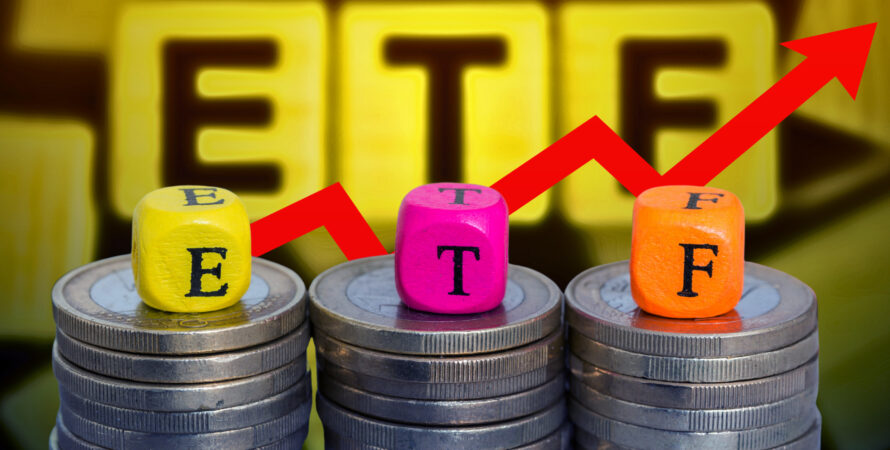- ETFs are exchange-traded fund that alternates on inventory exchanges, providing a combination of mutual funds and personal stocks.
- ETFs offer liquidity, transparency, diversification, lower costs, tax performance, intraday trading and customization options.
- Investors can explore equity, constant profits, commodity, and region-specific ETFs, tailoring their portfolios to reach their investment goals and options.
Fundamental Building Blocks: ETFs are investment funds that collectively pool the capital of a couple of buyers to shop for a diverse portfolio of properties. These assets can include stocks, bonds, commodities, or even a mixture of these.
Stock Market Evolution: ETFs emerged in the early 1990s and their shape represents a combination of mutual funds and man or woman stocks. Like mutual budgets, ETFs offer diversification, however, they exchange on inventory exchanges, just like individual stocks.
Advantages Of ETFs
- Liquidity and Transparency
ETFs exchange during the day, imparting liquidity and the capacity to conduct trades at market costs. Moreover, they disclose their holdings every day, improving transparency for traders.
- Diversification
One of the most considerable benefits of ETFs is diversification. By maintaining more than a few properties, they help spread risk, decreasing the effect of poor-acting character securities.
- Lower costs
ETFs are regarded for their fee efficiency. With decreased fee ratios in comparison to a few mutual price ranges, they allow traders to preserve extra in their returns.
- Flexibility
ETFs cover an in-depth range of asset instructions and funding techniques. Whether a user is interested in unique sectors, commodities, or maybe an international index, there is probably an ETF to shape their funding goals.
- Tax Efficiency
ETFs frequently boast tax benefits, with the potential for reduced capital gains taxes due to their precise creation and saving mechanism.
- Intraday Trading
ETFs can be bought and offered at marketplace fees at some point in the trading day. This flexibility is precious for investors trying to capitalize on quick-term rate movements.
- Customization
Investors can appoint diverse ETF strategies, from evading in opposition to marketplace downturns to leveraging sure sectors. This level of customization is not always available within a traditional mutual price range.
Types of ETFs
- Value ETFs
These are the most widely recognized kinds of ETFs, reflecting the production of a particular stock record. Models incorporate the SPDR S&P 500 ETF, following the S&P 500, and the Invesco QQQ Trust, which follows the Nasdaq-100.
- Fixed Income ETFs
Fixed earnings ETFs put money into bonds and other debt securities, offering a predictable earnings circulate. They are available in diverse kinds, which include government, company, and municipal bond ETFs.
- Commodity ETFs
These ETFs tune the performance of commodities like gold, silver, oil, and agricultural products. Investors can benefit from direction to these markets without proudly owning their physical belongings.
- Sector ETFs
Sector-particular ETFs attention on a specific industry or zone, imparting centered direction for those interested in tech, healthcare, strength, or different segments of the financial system.
The Best ETF Trading Strategies
- Pick an Investment Fund
To put resources into ETFs, a user will require an investment fund. Ensure the brokerage they choose gives a variety of ETFs and presents a user-friendly platform.
- Diversify the Portfolio
Consider the funding desires, chance tolerance, and time horizon. Diversify the portfolio with the aid of choosing ETFs that align with the approach.
- Monitor Performance
Regularly tune the overall performance of the ETF holdings and rebalance the portfolio as the user keeps their preferred asset allocation.
- Cost Considerations
Keep an eye fixed on cost ratios, which constitute the annual expenses related to an ETF. Lower costs can significantly affect the long-term returns.
- Stay Informed
Stay updated on the economic markets and know-how international occasions may additionally affect ETF investments. This understanding will assist the user in making knowledgeable choices.
Conclusion
ETFs have become a necessary device for buyers, supplying variety, transparency, and price efficiency. Understanding their fundamentals and benefits can empower the user to make knowledgeable investment choices, aligning their portfolio with their monetary goals and risk tolerance. Whether a user is a passive, long-time period investor or an active trader, ETFs provide a flexible and reachable street to participate in the international monetary markets.




